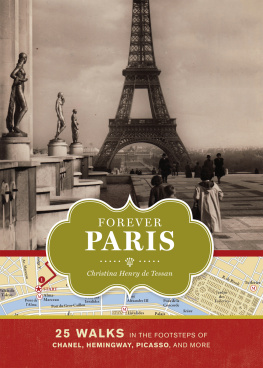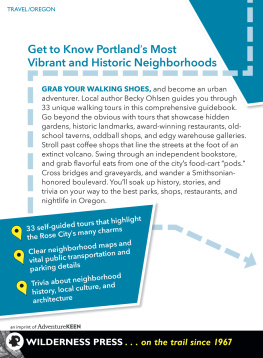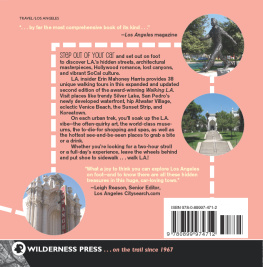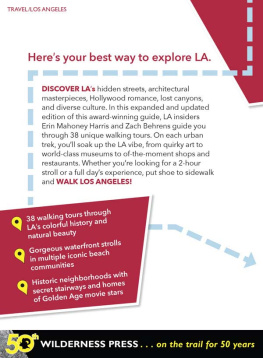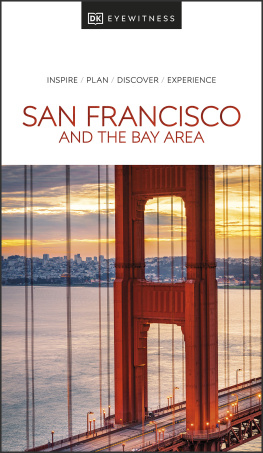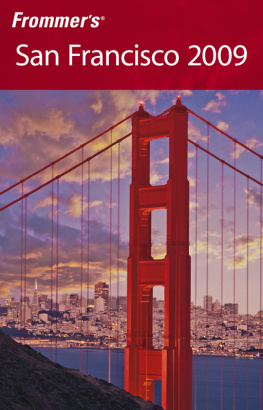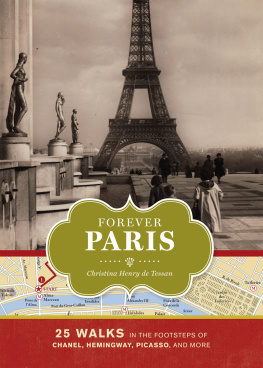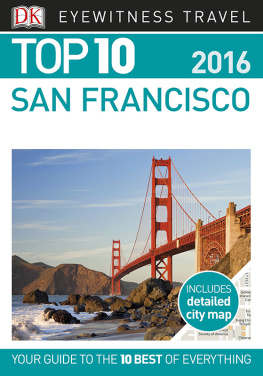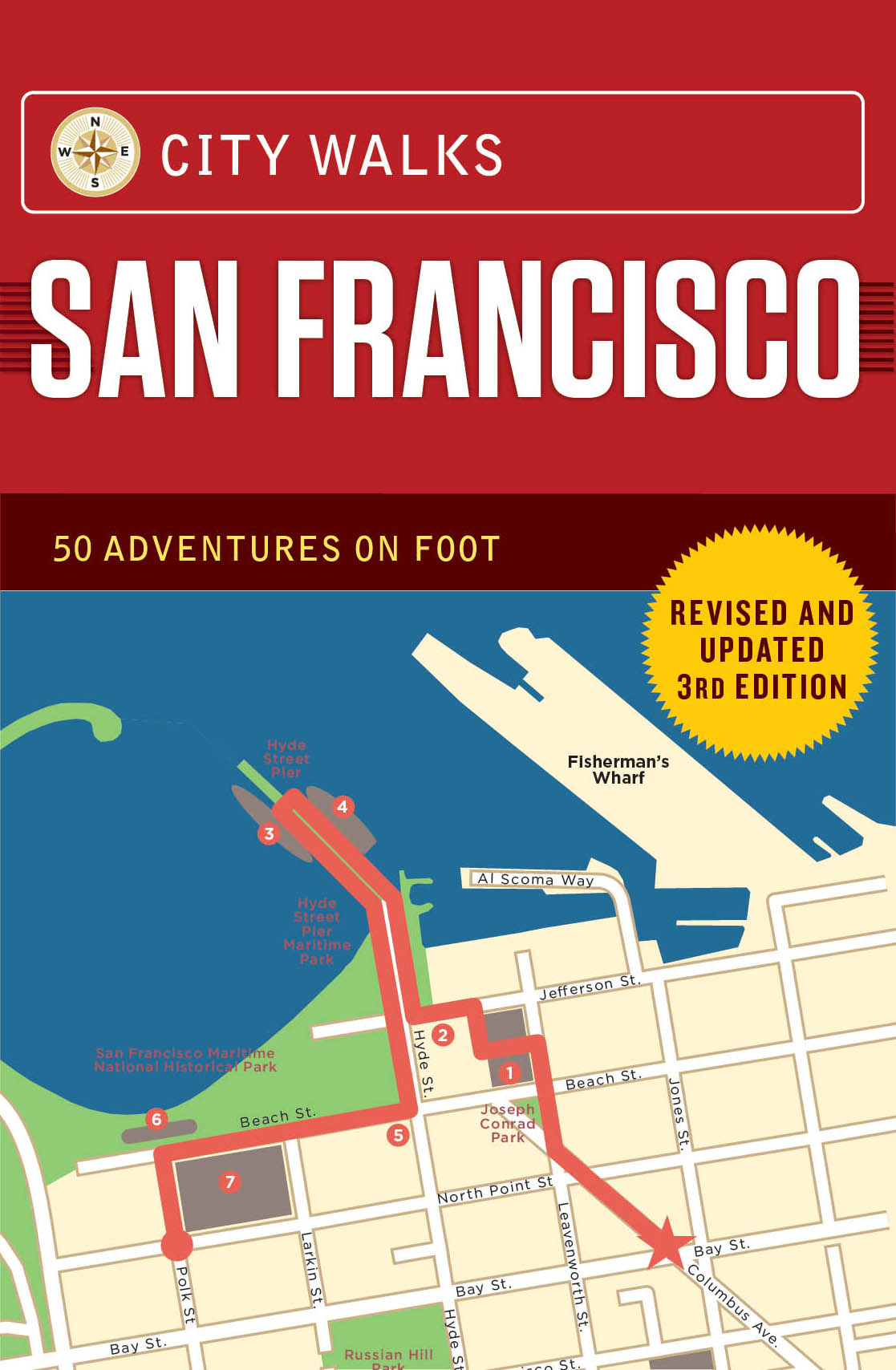

A TASTE OF SAN FRANCISCO
San Francisco has always attracted dreamers and seekers of the good life. Once a small town of little interest to the rest of the world, San Francisco was suddenly catapulted into the limelight in 1848 when gold was discovered nearby. San Francisco was instantly transformed into a true city, and California was swept into statehood in 1850. The gold rush was followed by an even more profitable silver rush, and the city continued to draw people from around the world throughout the late nineteenth century. In the 1950s, it became the West Coast hub of the Beat Generation. A decade later, the city drew thousands upon thousands of free-spirited hippies, who descended upon the Haight-Ashbury for the Summer of Love. Most recently, San Francisco became the epicenter of technological innovation, drawing a new kind of pioneer in the form of stock-option seekers, entrepreneurial wizards, and high-tech masterminds.
That risk-taking, forward-thinking spirit is an integral part of the citys characterand is visible all around in the ever-changing cityscape. Entire neighborhoods are reinventing themselves: Hayes Valley, Mission Bay, and Dogpatch, to name a few. The revamped de Young Museum, SFMOMA, Exploratorium, and Ferry Building are just a few of the citys new-and-improved landmarks. Restaurants are endlessly experimenting with new ideas, and trends like whimsically flavored artisanal ice cream and single-origin coffee become the talk of the town.
Of course, San Francisco is not only about change. Youll still find fabulous dim sum, long-standing seaside shacks, cable cars, and handsome Victorian architecture, and its jaw-droppingly beautiful physical geography remains unchanged. This heady mix of old and new, innovation and tradition, makes San Francisco a dynamic and exciting city to visit these days. And walking is the single best way to gain access to the citys hidden secrets, insider favorites, and distinctive spirit.
GETTING AROUND SAN FRANCISCO
San Francisco, located at the tip of a peninsula, is approximately 7 miles long by 7 miles wide and includes 43 hills within city limits. Since the city has not been able to grow outward due to its geographic constraints, it has become increasingly crowded, making it one of the countrys most densely populated cities. Its small size makes it a singularly walking-friendly city, as numerous points of interest are packed into a relatively small area.
One of the citys great claims to fame is, of course, its hills. These allow for breathtaking views and make for a distinctive skyline, but for the walker, they also require some forethought. Sensible shoes are always a good idea when you plan to be on your feet all day, but nowhere is that more true than in San Francisco. Note the difficulty rating at the beginning of each walk and plan accordingly. Several walks along the coastline and in the parks are on dirt trails; these have been indicated in the cards introductions.
Although a few of the walks included here are loops, many begin and end in different places. Public transit is generally the easiest way to negotiate the different start and end points, and nearby bus and train lines are marked on the maps by circled letters or numbers. For detailed information on bus routes, maps available for downloading, schedules, and visitor passes, visit www.sfmuni.com, or check out the maps located at bus shelters throughout the city. Standard fare is $2.75 and exact change is required. You may want to consider a one-, three-, or seven-day Passport ($21$42). Although buses are identified by both a number and street name, they often veer from the street whose name identifies them and take more circuitous routes. A bus map will provide complete details. Ask for a transfer if you plan to catch the bus at the end of the walk; its valid for ninety minutes after being issued. For more complete information on Bay Area transit, including BART and cable-car schedules, visit http://transit.511.org.
With a few exceptions, mostly along the coast, most of the walks are less than a mile in length and can be completed within one to two hours at a leisurely pace. On the card maps, 1 inch equals 790 feet, so 6 1/2 inches is approximately 1 mile. The cards with the white borders around the map side, which describe longer walks, are created at a different scale of 1 inch to 1,580 feet (3 1/2 inches to a mile).
HOW TO USE THESE CARDS
From its most urban neighborhoods to its rugged coastal trails, San Francisco is a city best seen on foot. Not only is parking a chore, but many of the citys best features are best appreciated up close. Each card in this deck provides a summary of attractions along a particular routefrom world-famous landmarks and cafs to little-known specialty boutiques and marketsand reveals a different facet of the city.
The cards begin at the east end of Market Street and move counter-clockwise through the northeastern part of the city, then along the coast. They continue inland through Golden Gate Park and down through the center of the city, and loop around the southern part of San Francisco. This organization should make it easy to link several walks into one outing. The routes themselves are marked on the maps on the opposite sides of the cards. Because of space considerations, the cards do not list business hours or days of operation, so it is best to check these before venturing out.
One last thing: San Francisco weather is notoriously unpredictable. Although it is rarely very cold, the city is not always basking in California sunshine, and it is often quite breezy. The hills also create distinct microclimates: It can be foggy in one part of town and sunny just one hill over. The city is often cloaked in its trademark fog on summer mornings and evenings, while winter can be quite sunny for days on end. Plan accordingly and always bring an extra layer.
Text copyright 2018 by Christina Henry de Tessan
Maps copyright 2018 by Lohnes + Wright
All rights reserved. No part of this deck may be reproduced in any form without written permission from the publisher.
All City Walks decks are independently researched.
Our authors accept no payments or discounts in exchange for listing or endorsing any place or business.
The information in this deck is updated regularly.
However, as things can change quickly, if you notice anything out of date, feel free to contact us at .
ISBN 978-1-4521-6246-1 (deck)
ISBN 978-1-4521-6558-5 (epub, mobi)
Design by Michael Morris
Chronicle Books LLC
680 Second Street
San Francisco, CA 94107
www.chroniclebooks.com
KEY TO SAN FRANCISCO WALKS MAP
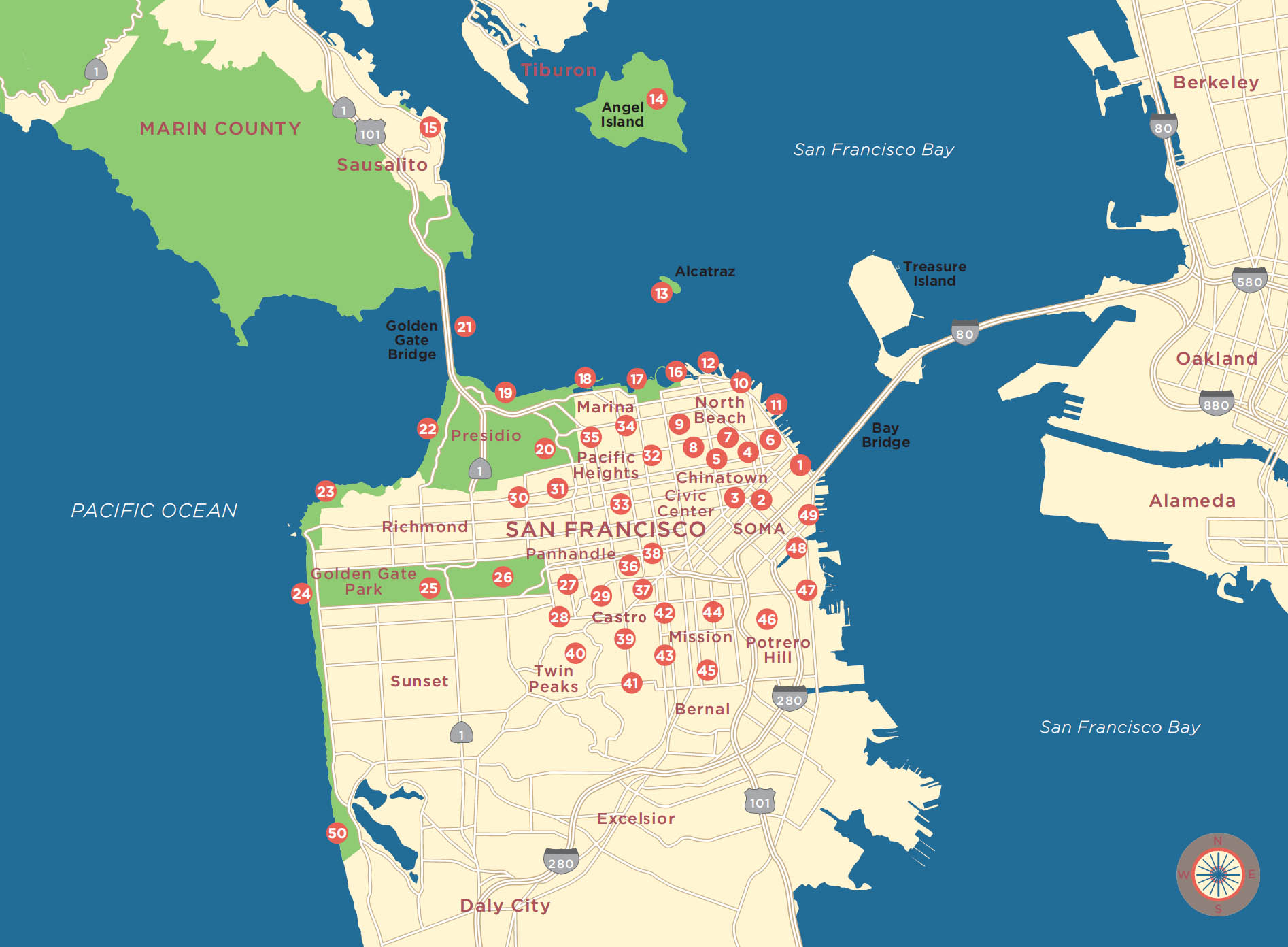
THE FERRY BUILDING MARKETPLACE AND FARMERS MARKET
Visiting the Saturday-morning farmers market is a popular ritual for locals. With its historical building, waterfront views, and culinary delights, the bustling market is a feast for the eyes and stomach. Go early, as it gets crowded.
DIFFICULTY: EASY
Begin in front of the Ferry Building (1) (via bus #, , , , , , or F train). This landmark was once one of the worlds busiest ferry terminals, but with the construction of the Golden Gate and Bay Bridges, the ferry business slowed. The buildings prominent role in city life declined, and the Embarcadero freeway went up in 1957. After the freeway was damaged in the 1989 Loma Prieta earthquake, it was dismantled, and the building was restored to its former glory. Today, vendors stocked with high-end delicacies line its airy corridors (open daily); Youll find local purveyors of cheese, olive oils, produce, meats, chocolate, bread, and more. Notable stops include Blue Bottle Coffee, Hog Island Oyster Company, Book Passage, Miette for sweet confections, Cowgirl Creamery for cheese, Recchiuti Confections, The Gardener for kitchen and garden objects, and Heath Ceramics. Take a lunch break at retro-inspired Gotts Roadside, Mijita, or Out the Door, the Vietnamese takeout stall of the restaurant The Slanted Door. You cant really go wrong here, thoughits all tantalizing and delicious. The dazzling farmers market takes place outside on Tuesdays, Thursdays, and Saturdays until 2 p.m. (there are fewer stands on weekdays). Dont miss the Rancho Gordo heirloom beans, the Downtown Bakery sticky buns, or the Frog Hollow peaches (if theyre in season). At the far end, prepared foodscrab-cake sandwiches, rotisserie chickens with a cult following, and tacoscan be purchased and enjoyed at waterfront picnic tables. Work off lunch with a scenic stroll south along the Embarcadero. Admire the Cupids Span (2) , then catch the N train.
Next page

